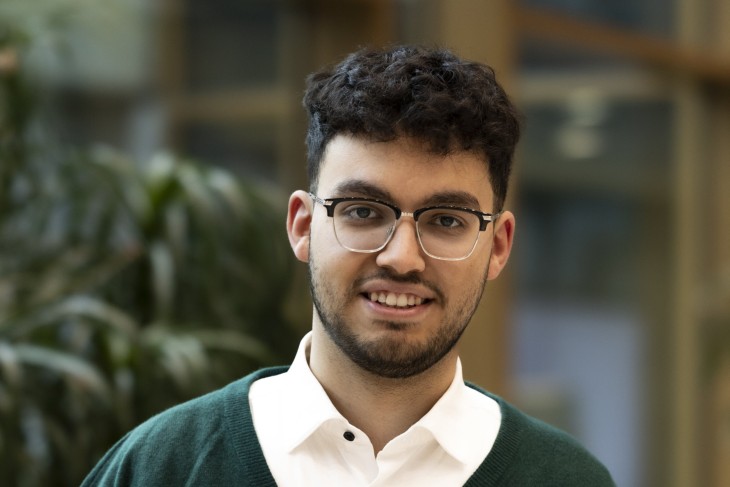“I chose the Master’s in Civil Engineering & Management after completing my Bachelor's in Civil Engineering at the University of Twente. I’m passionate about civil engineering because of the large scale and impact of the projects: building bridges, dikes, and roads. At some point, I considered studying Architecture, but it felt a bit too creative for my taste; I like the physics and maths in civil engineering. For example, how can I predict river floods to prevent dangers to the surrounding land and the people living there? I’m learning to use maths and physics to create models that represent real-life situations and help answer questions like this.
Freedom to specialise
The programme offers four specialisations. I’ve chosen the specialisation in Water Engineering & Management, and the profile in River & Coastal Engineering. I'm focusing on designing dikes to protect people from rivers and the sea, which is highly relevant in the Netherlands, where a large part of the country is below sea level. My studies also cover river flooding and other challenges centred around infrastructure and water management. The assignments are diverse: building windmills in the North Sea, preparing regions for extreme rainfall, and modelling the impact of a dike breach, among others.
I love the balance between the technical and non-technical aspects of civil engineering. For example, before starting to build a bridge, I must consider the ecological impact, municipal needs, and residents' concerns. This means engaging with different parties to find a solution that is agreeable to everyone involved. A big part of this process is requirement analysis, where I figure out if the requested features are feasible and to what extent. This teaches me project management skills as well.
Hands-on experience
I love that we apply the theory we learn to real-world projects, so we can see how our work as civil engineers can have a real impact on society. One challenging assignment involved redesigning the IJmuiden sluice in the Netherlands hailed as the largest in the world. A sluice is a lock system that allows ships to move between different water elevations, and we had to redesign the entire sluice complex. The sluice gates had to withstand storms while they simultaneously needed to accommodate 27,000 ships annually passing through. It was tricky to make the gates both strong enough and able to work smoothly.
In another assignment, my fellow students and I collaborated with the Delta Research Institute to figure out a problem with a lake. The harbour needed to be deep enough for ships, so we had to remove sand from the bottom of the lake and figure out where to put the sand without hurting the environment or having it wash back into the harbour, which would mean we’d have to remove it again. We used a model to predict where the sand would go. It was fun to experiment with scenarios like, "If we dump the sand here, where will it move?"
More than studying
Balancing study with fun is important - that’s why I’m active in my student association, Audentis. It’s a good way to blow off steam as studying can be demanding. I also play soccer with friends on the weekends, and that's another great way to relax.
I think it’s also important to learn new things and gain experience in a field that's different from my studies, and my side job at Novel-T, the start-up accelerator at the university, helps me do that. It’s completely different from my coursework — here, I help students launch a start-up by giving them advice and connecting them with the right people.
Looking ahead, I’m interested in joining a consultancy firm. There are many renowned civil engineering consultancy companies in the Netherlands, such as Arcadis and Royal HaskoningDHV: I’d love to work for one of them, and I'm also considering opportunities abroad.”




